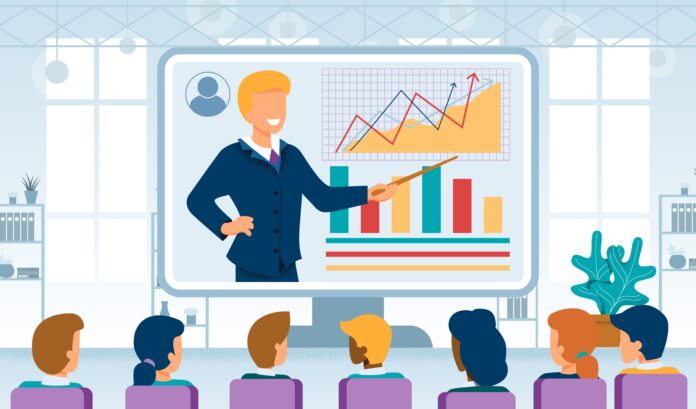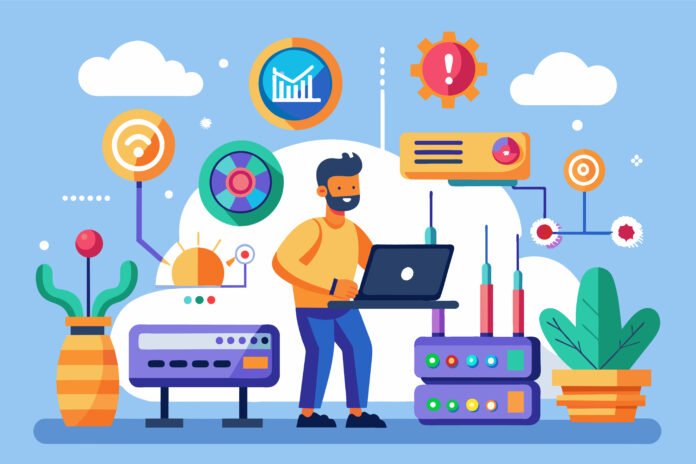ERP Software: The Alchemist Turning Data into Organizational Gold

Every business is sitting on an untapped goldmine – and it’s not hidden underground, but right there in their databases and records. It’s all the valuable data they collect every single day about sales, inventory, employees, customers, and more. But like unrefined ore, that raw data isn’t worth much on its own. It needs to be processed and refined to unlock its true value. That’s where ERP software steps in to play the role of master smelter.
With ERP’s magical touch, companies can identify costly bottlenecks, streamline operations, optimize the use of resources, and uncover new opportunities – turning every ounce of their data into profitable bullion. Let’s take a closer look at this powerful alchemist in the business world!
What is ERP and What does ‘ERP Software’ do?
Enterprise Resource Planning (ERP) serves as an integrated system that streamlines and coordinates various organizational processes and functions. It acts as a centralized repository, providing cross-departmental access to a unified database. This shared data source enables efficient collaboration and information exchange among different teams within a company.
The primary goal of ERP software is to facilitate the flow of information between different business functions and departments. This enables organizations to streamline their operations and reduce redundancies. It also helps them make data-driven decisions based on a single source of truth.
What are the Most Popular Features of ERP Software?
ERP software is designed to streamline operations, improve efficiency, and provide real-time data visibility across an organization. Here are some of the most popular features of ERP software:
| Feature | Description |
| Integrated Modules | ERP systems comprise integrated modules covering various business functions like finance, accounting, procurement, inventory management, supply chain management, CRM, HR, and more. |
| Real-time Data Access | ERP software provides real-time access to accurate and up-to-date data from different departments. This centralized data repository eliminates data silos, ensuring consistency across the organization. |
| Automation and Workflow Management | ERP systems automate routine tasks and processes, such as order processing, invoicing, payroll, and inventory tracking. They also support workflow management, ensuring efficient task assignment, tracking, and completion. |
| Financial Management | A robust financial management module includes features like general ledger, accounts payable, accounts receivable, fixed asset management, and financial reporting. |
| Supply Chain Management | ERP systems often include supply chain management capabilities like inventory management, purchasing, logistics, and distribution management. |
| Reporting and Analytics | ERP software provides comprehensive reporting and analytics capabilities, enabling the generation of customized reports, dashboards, and business intelligence insights. |
| Scalability and Customization | Modern ERP systems are designed to be scalable and customizable, allowing organizations to adapt the software to their specific business needs. |
| Mobile Access | Many ERP vendors offer mobile apps or mobile-friendly interfaces, enabling users to access critical data and perform essential tasks remotely or while on the go. |
| Integration with Other Systems | ERP systems often provide integration capabilities, allowing them to connect with other business applications such as CRM systems, e-commerce platforms, or specialized industry-specific software. |
| Security and Access Controls | ERP software typically includes robust security features like user authentication, role-based access controls, and audit trails to ensure data integrity and protect sensitive information. |
What are the different types of ERP Software Solutions?
There are several types of ERP (Enterprise Resource Planning) software solutions available in the market, each designed to cater to the specific needs of different organizations. Here are the main types of ERP software solutions:
1. On-premises ERP:
In this traditional model, the ERP software is installed and runs on the organization’s servers and infrastructure. The organization is responsible for maintaining and updating the software, hardware, and infrastructure. Examples include SAP ERP, Oracle E-Business Suite, and Microsoft Dynamics ERP.
2. Cloud-based ERP:
Cloud-based ERP solutions are hosted and managed by the software vendor or a third-party provider. The ERP software and data are accessed through a web browser or a dedicated client application, eliminating the need for on-premises infrastructure. Examples include NetSuite ERP, Workday, and Oracle Cloud ERP.
3. Industry-specific ERP:
These ERP solutions are tailored to meet the unique requirements of specific industries, such as manufacturing, retail, healthcare, or construction. They often include industry-specific features and functionalities out-of-the-box. Examples include Infor CloudSuite (for manufacturing), Microsoft Dynamics 365 for Retail, and Veeva Systems (for life sciences).
4. Open-source ERP:
Open-source ERP solutions provide free access to the software’s source code, allowing organizations to customize and modify the software according to their needs. These solutions typically have an active community of developers contributing to the software’s development. Examples include Odoo, Compiere, and Apache OFBiz.
5. Small Business ERP:
These ERP solutions are designed specifically for small and medium-sized enterprises (SMEs), offering a more affordable and scalable option compared to traditional ERP systems. They often have a simplified user interface and a focus on core business processes. Examples include Brightpearl, Epicor ERP, and Acumatica.
6. Two-tier ERP:
In this approach, organizations maintain a primary ERP system for their core operations and integrate it with secondary ERP systems or best-of-breed solutions for specific departments or subsidiaries. This approach allows organizations to leverage the strengths of different software solutions while maintaining a centralized system.
7. Mobile ERP:
With the increasing use of mobile devices in the workplace, some ERP vendors offer mobile applications or mobile-optimized interfaces that allow employees to access and interact with the ERP system from their smartphones or tablets, enabling remote access and real-time updates.
How to Choose the Right ERP Software for Your Business?
In the ever-evolving world of business, selecting the right ERP software is akin to finding a trusty compass amidst a vast and unpredictable terrain. It’s a journey that requires careful navigation through a labyrinth of factors, each carrying its own weight and significance.
Step 1: Laying the Groundwork – The Research Phase
The first step is research –weighing the costs of various ERP solutions against your unique business needs. If you’ve reached this point, you’ve likely recognized that an ERP system, with its ability to orchestrate all business processes and foster data-driven decision-making, is a far more powerful tool than simple accounting software.
Step 2: A Multifaceted Evaluation
Next comes the evaluation phase, where you compare solutions side by side, like a skilled jeweler inspecting precious stones. Embrace the wisdom of your employees, for they are the frontline warriors witnessing your business’s ebb and flow firsthand. Their opinions, feedback, and suggestions will illuminate the path toward an informed and widely supported decision.
Step 3: The Pivotal Selection
The third step is selection – a delicate dance between your company’s needs, timeline, and budget. As you narrow options, pose probing questions: Does the solution address industry-specific pain points? Can it integrate seamlessly with third-party applications? If affirmative, you may be tempted to declare victory, but wait – there is one more crucial consideration.
Step 4: The Vendor Partner: A Pivotal Choice
Even if an ERP solution appears flawless, it may not fit if the software vendor fails to align with your values and vision. Evaluate potential partners: Do they prioritize your needs? Do they offer comprehensive training and unwavering support? Do they share their product roadmap transparently, inviting you to shape the future?
Step 5: Upholding Customer Primacy
Ultimately, the right vendor should advocate for your rights as a customer – clear fee structures, unlimited user access, customization freedom, transparent pricing, cloud flexibility, robust security, and unwavering data ownership. They should embrace integration, community resources, and comprehensive training.
The Essence of the Journey
In this quest, remember: the journey itself is as crucial as the destination. Approach with patience, diligence, and an open mind, for the right choice will streamline operations and pave the way for growth in an ever-evolving landscape.

What are the most important factors to consider when choosing ERP software?
Here are the most important factors to consider when choosing ERP (Enterprise Resource Planning) software, presented in a tabular column:
| Factor | Description |
| Business Needs | Ensure the ERP software aligns with your organization’s specific requirements, processes, and industry. It should support your core operations and future growth plans. |
| Integration | Evaluate the ERP system’s ability to integrate with your existing software and systems, such as CRM, accounting, and supply chain management tools. |
| Scalability | Consider the ERP solution’s scalability to accommodate your company’s potential growth in terms of users, transactions, and data volume. |
| User Experience | The user interface should be intuitive, user-friendly, and efficient for your employees. Ease of use can significantly impact user adoption and productivity. |
| Customization | Assess the level of customization offered by the ERP vendor. Your business may require specific modifications or custom modules to meet unique requirements. |
| Reporting and Analytics | Robust reporting and analytics capabilities are essential for data-driven decision-making. Ensure the ERP system provides comprehensive reporting tools and real-time insights. |
| Security and Compliance | Evaluate the security features, data protection measures, and compliance with industry regulations and standards (e.g., GDPR, SOX, HIPAA) to safeguard your sensitive data. |
| Implementation and Support | Consider the vendor’s implementation methodology, training resources, and ongoing support services to ensure a smooth transition and reliable assistance when needed. |
| Total Cost of Ownership (TCO) | Analyze the upfront costs, licensing fees, implementation expenses, training costs, and ongoing maintenance and support fees to understand the overall TCO of the ERP solution. |
| Vendor Reputation and Stability | Research the vendor’s reputation, financial stability, and long-term viability to ensure continued product development and support for your ERP investment. |
When is the Right Time to Switch to ERP Software?
The right time to switch to an ERP system is when your current systems and processes can no longer efficiently support your growing business operations. This includes managing increasing complexities or providing the necessary real-time data visibility and integration across different departments.
Common signs include manual data entry across multiple disconnected systems. You might also see a lack of real-time inventory tracking, inefficient order processing, and limited reporting capabilities. Implementing an ERP solution can streamline operations, improve data accuracy, enhance collaboration, and support scalability for future growth.

